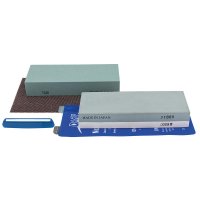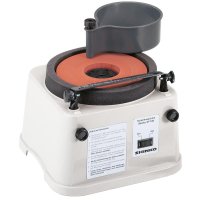The right sharpening technique for everyone
Honing steel
This sharpening technique only works with relatively soft blades (52-56 HRC) and is typical of butchers and chefs. With this method, the knife blade is passed along the honing steel at an angle of 15° to 20° alternately and only a little material is removed. Instead, a fine burr is tightened, or an existing burr is rebuilt. When cutting, this burr is relatively quickly reversed so that the blade has to be constantly resharpened.
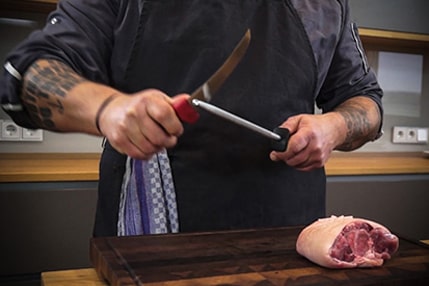
Knife sharpening with sharpening steel
Knife sharpener
A quick method of sharpening knives at home is the so-called knife sharpener. The blade is simply pulled through a slot on the sharpener. The abrasives are at a defined angle to the blade and remove material from the edge accordingly. However, the cutting angle cannot be adapted to the cutting geometry of the knife. The abrasives used are usually quite coarse. The blade sharpened in this way initially makes a sharp impression, but the result is a rather "plucking cut". The coarsely sharpened edge usually does not last long and blunts quickly.
Bench stone
This sharpening technique is the most elaborate, but also the best method for giving high-quality knives the right polish. When sharpening manually on water stones or diamond plates, a geometrically correct cutting edge is formed. This is done by starting with a coarse grit and gradually sharpening the cutting edge with finer and finer grits and finally polishing it. The result is a smooth cut and a long edge life. Sharpening manually, however, requires some practice.
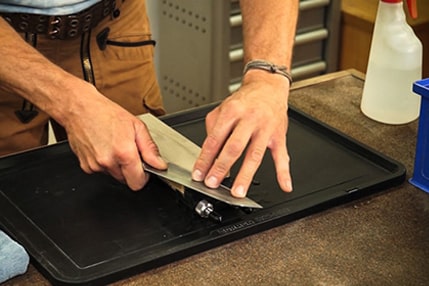
Knife sharpening on bench stone
Knife sharpening system
The exact name is actually abrasive-guided knife sharpening systems. The sharpening process is similar to sharpening on bench stones. However, the knife is fixed in a holder and the abrasive is moved over the cutting edge. This sharpening method can be learned without much practice, as the abrasives are also clamped and are always moved over the blade at the desired angle. This technique also produces a geometrically correct cutting edge. With simple sharpening systems, however, only larger cutting-edge angles (> 25°) can be realised.
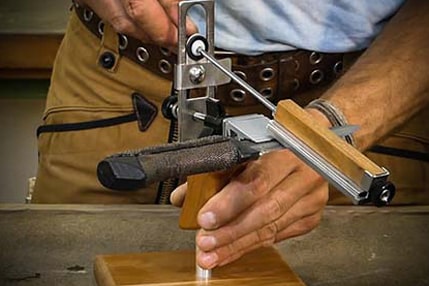
Knife sharpening with sharpening system
Water-cooled sharpening machine
By cooling with water, these machines avoid overheating caused by the rotating grindstone. With suitable grinding guides, the cutting-edge angles can be reproduced exactly. Machines that grind on the round outer edge of the stone (e.g. DICTUM® DS 150 L or Tormek) always produce a hollow grind, which should be avoided with high-quality Japanese knives. Machines that sharpen on the flat side of the stone or grinding wheel (e.g. Shinko or Tormek with diamond wheel) are therefore better suited for knife sharpening. To complete the sharpening process, honing on the leather disc or manually on a honing stone is recommended.
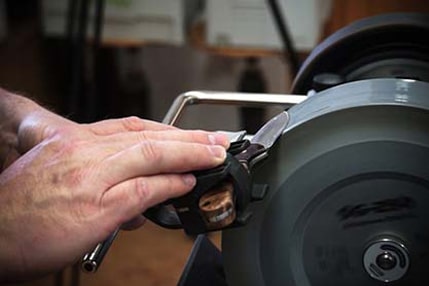
Knife sharpening on Tormek

